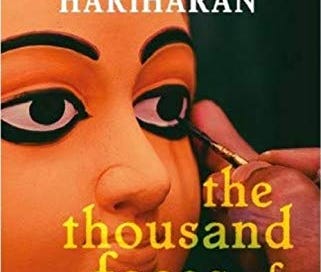“The Thousand Faces of Night” by Gita Hariharan
A novel about marriage and womanhood, and how the two are unjustly tied to each other.
To be critical of marriage is a taboo in Indian society. And yet jokes bemoaning marriages and unhappy couples are almost universally resonant across the subcontinent.
Coincidence? Hardly.
I have often wondered whether attitudes towards following norms- be married at a certain age, give birth at a certain age, pressurize your kids to do the same at a certain age; all stem from playground mentality.
“I had to go through it and so must you. It is the way of things.”
Of course, no one spells it out as such, but more often than not it appears to be the prescription that we all dutifully swallow. Do not get me wrong, I am not critical of marriage and the idea of falling and being in love. I am critical of how often love is divorced from marriage.
Gita Hariharan’s novel pens all this and so much more beautifully well, extending notions from gender studies to the reality of Indian societies. An underrated work with poetic sentences, I agree with the blurb that all Indian men and women ought to read this novel.
They needn’t agree with it though.
What is Indian Womanhood?
The way this novel births its plot and nurtures it to fulfillment is through the intermixing of mythic tales with the lives of the major female characters. This is all too common in India, where the travails of a mythical figure are easily transposed to the ongoing troubles of a real person. In that regard, most Indians are already ardent literary theorists.
But what this book exemplified and critiqued the most is how the Indian woman seldom gains identity as her own self, and is often thrust the labels of mother and sister all too easily. In that context, the “barren” woman, as does the promiscuous woman, loses her womanhood and by extension her personhood itself in the eyes of society.
The very use of the word “barren”, to indicate the inability of a person to conceive, and its likening to a field or an agricultural body, best highlights this commodification of a woman: reducing her to a baby-making machine at best.
Mind you, there is no prescriptive model to it all either. Some women thrive in motherhood, aching for a child while numerous others admonish it all together. What is key is whether the choice emerges from within, or is thrust upon you.
The Danger(s) of the Foreign
An interesting plot point in the novel, and by extension in Indian society, is the worry of sending one’s kids abroad. The American landscape is painted as a web of traps waiting to ensnarl the virtuous Indian youth into a net of vices. And yet, there is a huge capital on going abroad and a passive prestige premium on foreign-educated, internationally-employed grooms and brides.
Think I am exaggerating? Glance at the For Sale, sorry, I meant, glance at the Matrimonials in your nearby Sunday newspaper and account for yourself.
This is an interesting paradox: to go away and not lose yourself. Not to be confused with forgetting one’s roots of course. This does beg the question, what is this fear of mixing away? Isn’t genetic diversity the name of the game when it comes to the survival of the species?
Let’s leave that question for the next pandemic, perhaps.
Do read this book, a few faces at it at night or day will suffice to finish the novel. Like and share this newsletter, lots of weekend updates await in the month ahead. `



![Buy The thousand Faces of Night [Paperback] Hariharan, Githa Book Online at Low Prices in India | The thousand Faces of Night [Paperback] Hariharan, Githa Reviews & Ratings - Amazon.in Buy The thousand Faces of Night [Paperback] Hariharan, Githa Book Online at Low Prices in India | The thousand Faces of Night [Paperback] Hariharan, Githa Reviews & Ratings - Amazon.in](https://substackcdn.com/image/fetch/$s_!-8hG!,w_1456,c_limit,f_auto,q_auto:good,fl_progressive:steep/https%3A%2F%2Fsubstack-post-media.s3.amazonaws.com%2Fpublic%2Fimages%2F317274a5-fee7-4edc-8aaf-e87abcb1c022_321x500.jpeg)